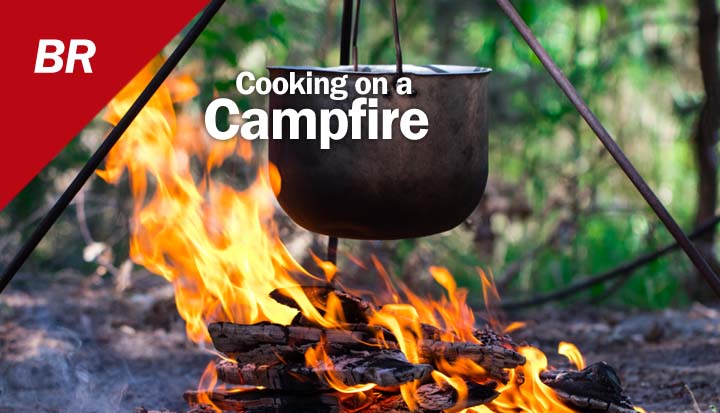As the weather warms up, it’s natural that we tend to spend more time outdoors. For many of us that means camping, fishing, hiking, and other activities. All these activities can work up quite an appetite and when it comes to food, you’re going to have fun cooking over a campfire.
Every year aspiring campfire chiefs wonder what the easiest and best ways to build a campfire are, and what is the best set up to be able to cook over a campfire? Read on to find out. Even a seasoned professional could learn something from this article!
Permission to fire, Sir?
The number one issue does not even involve the actual fire, it comes way before that. Before you can even think about building a fire you must find out if you have permission to build a fire at your campsite in the first place. If you are in a campground there are probably designated areas for campfires which – thankfully – are strictly enforced.
Always be sure you have permission before you decide to build a campfire of any kind. With campfires you have to consider that sparks are likely to escape from the fire and fly into the surrounding area. Sometimes the sparks go much further than you’d expect. Therefore it is always advisable to keep a safe distance from any tents or other supplies that you may have with you.

Don’t forget about the natural surroundings that could also be possible fire hazards, things such as dry leaves near the campfire, overhanging branches, nearby bushes, or other debris. The last thing you’ll want is to be responsible for a major wildfire that ends up on the news. Other than lightning, wildfires are primarily started by people (and unfortunately sometimes even intentionally)
Safety must always be your number one concern. You should always keep a bucket of water near the fire.
This will be used to douse the fire when you are finished cooking but it could also be used if there are any problems.If you are camping and already have your tent set up, if possible, build your campfire downwind of your tent. This will keep the smoke from blowing directly on and into your tent.
Gathering firewood
Fire-wood should always be gathered before it gets dark. Although the reasons for this sound obvious, I have been on camping trips in which this did not happen. It’s easy to get caught up in the fun of fishing, boating, hiking, and other activities and simply forget that you will need the fire later on.
If you need to write a ‘to do list’, it will be worth it trust me me, it is much easier to find appropriate firewood and kindling during daylight hours than at night using a flashlight big or small… can you say snake?
If the spot you are building your fire has not previously been used for this purpose you probably should dig it out as a ‘fire-pit’ area. This will help to contain the fire, make it easier to start a fire when windy, and define the space for others.
Kindling starts fires
Begin building the fire with your kindling. This can be leaves, very small twigs, or even pine needles. You can make them compact by squeezing them together (they should be about the size of a softball) and then placing them in the center of your fire ring. Make a nice pile of the kindling and then begin making a loose teepee around the pile with small sticks.
After you have this very open loose teepee you should simply continue building teepees around teepees using slightly bigger sticks. Keep in mind that you must allow oxygen to get through in order to feed and maintain the fire. You will end with large wood or sticks and you are ready to light your campfire.
You can actually do your cooking on the hot embers of a fire rather than the fire itself. Drag some of the embers to one side for cooking purposes and leave the other side for ambiance and warming. Always use pot grabbers when cooking over a campfire. Toasting forks work great for hotdogs and marshmallows.
Potatoes, corn, onions, and apples can be wrapped in tin foil and placed directly in the embers to cook. Try cutting cabbage into quarters and place a small bit of butter on it as well as salt and pepper. Then wrap it in tin foil and place in the embers to cook – delicious!
